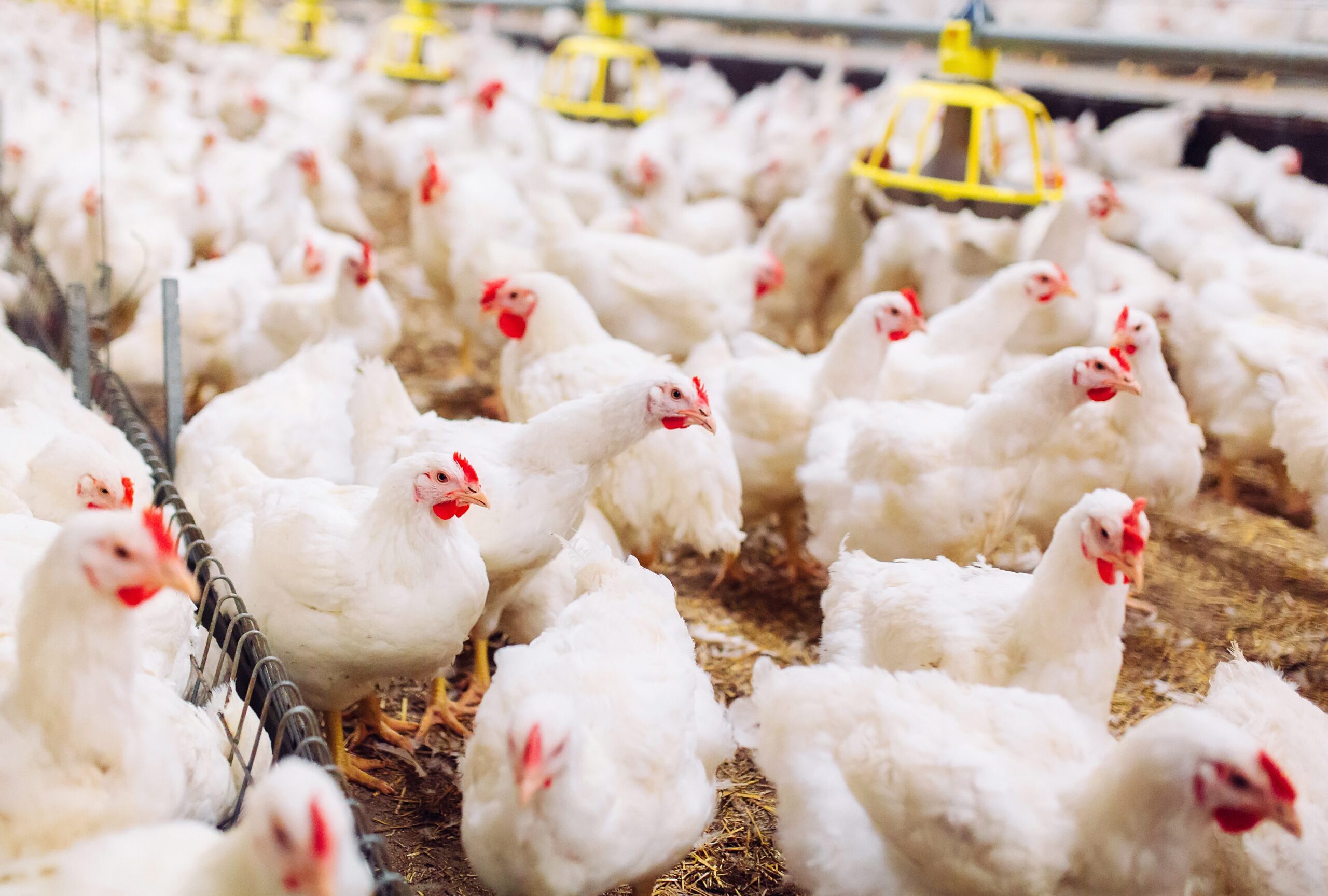In poultry diets, insoluble fibers enhance gizzard retention and digestive enzyme activity, while soluble fibers ferment in the ceca, producing short-chain fatty acids that lower pH and inhibit Clostridium perfringens. This study examined the impact of different fiber types and concentrations on jejunal and cecal gene expression in broilers experiencing a subclinical enteric challenge. Eight dietary treatments were administered from the day of hatch, consisting of six fiber-supplemented diets and two controls: unchallenged and challenged, both without supplemental fiber. Fiber sources included 3% oat hulls, 3% soy hulls, and combinations of 1.5% soy or oat hulls with either 1.5% wheat middling or sugar beet pulp. Birds in challenged groups received a tenfold dose of a live coccidia vaccine on d 14 and 108 CFU of C. perfringens on d 18. Jejunal and cecal mucosa scrapings from 9 birds per treatment were collected on d 21 for transcriptome analysis. Differentially expressed genes were analyzed by quasi- likelihood F-test in edgeR (adjusted p < 0.05, logFC > 1.5), with gene ontology, KEGG pathway enrichment, and protein-protein interaction analyses of significant genes. Compared to challenged control, fiber-supplemented treatments showed distinct gene expression, especially in the jejunum, with most treatments inducing unique profiles. The exception was oat hulls, which resembled the challenged control in both tissues. In the jejunum, biological process enrichment highlighted the regulation of lipid metabolism, particularly its localization and storage. In the ceca, a strong defense response to bacteria and immune processes was noted. The KEGG analysis showed regulation of the peroxisome proliferator-activated receptor signaling pathway in the jejunum across treatments, alongside fatty acid and amino acid metabolism. In the ceca, linolenic and arachidonic acid metabolism and efferocytosis pathways were enriched. Twenty-one genes were consistently differentially expressed in the jejunum across fiber treatments, linking to plasma lipoprotein remodeling and enterocyte cholesterol metabolism. These findings suggest that fiber types influence immune responses and nutrient metabolism, offering a dietary strategy to enhance gut health and disease resistance in poultry.
Tabish, R., Y. Lin, S. Rochell, W. Pacheco, M. Bailey, W. Dozier, K. McCafferty and R. Hauck. 2025. Impact of dietary fiber types and concentrations on jejunal and cecal gene expression in broilers with a subclinical enteric challenge. 2025 International Poultry Scientific Forum, Abstract M105.
